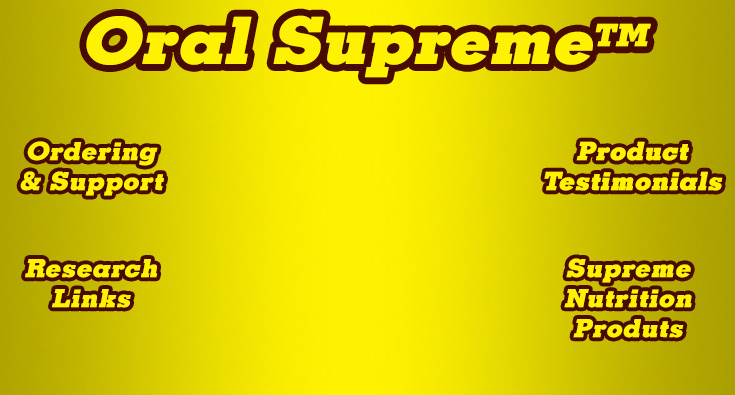
When Oral Supreme first came out its goal was to provide a great antimicrobial product to apply to the teeth and gums. Not a lot was known at that time in the alternative medicine world about dental biofilms. Once the knowledge became widespread and there became known various methods to identify these (both from scrapings and from more energetic/kinesiologic methods), we began to see how common these are and how they can contribute to dysbiosis in general. We have decided to totally reformulate Oral Supreme with this in mind. Not only will it retain its superb antimicrobial (bacterial, parasitic, fungal, spirochete) properties but the herbs used also have good research behind them to have the ability to degrade biofilms. We have not only researched but tested the product out and we feel this will be a very superior product. Just like the previous formulation we advise the following application.
1. Place a drop on an applicator or a clean finger and apply it where the teeth meet the gums on both the lingual (tongue facing) and buccal (cheek facing) surfaces. Do this before and after brushing
2. Twice weekly put 2 drops in a small glass of water and soak your toothbrush (can be as short a time as 10 minutes)
3. Stop if you feel you are sensitive to the oil blend- rash, etc.
4. BFB 1 and 2 can often substitute if sensitive to oral supreme.
The base of Oral Supreme is pomegranate seed oil, which has anti-inflammatory and antimicrobial properties. Active ingredients are as follows:
a) Cassia-shown to be effective for candida, staph, pseudomonas, and other biofilms (1, 2, 3, 7)
b) Tea tree- also shown to be effective for candida, staph, pseudomonas, and other biofilms (1, 2, 4, 5, 6, 7)
c) Rosemary- shown to be effective for candida albicans, Staphylococcus aureus, Enterococcus faecalis, Streptococcus mutans, Pseudomonas aeruginosa, E.Coli biofilms (6, 7)
d) Peppermint- shown to be effective for staph and e.coli biofilms (6, 7)
e) Pomegranate seed oil- shown to be effective in reducing plaque and gingival bleeding when used as a mouthwash (8)
Resources
1. Kavanaugh, Nicole L., and Katharina Ribbeck. "Selected antimicrobial essential oils eradicate Pseudomonas spp. and Staphylococcus aureus biofilms." Appl. Environ. Microbiol.78.11 (2012): 4057-4061.
2. Algburi, Ammar, et al. "Control of biofilm formation: antibiotics and beyond." Appl. Environ. Microbiol. 83.3 (2017): e02508-16.
3. Firmino, Diego F., et al. "Antibacterial and Antibiofilm Activities of Cinnamomum Sp. Essential Oil and Cinnamaldehyde: Antimicrobial Activities." The Scientific World Journal 2018 (2018).
4. Saito, Samuel Takashi, et al. "Bioguided fractionation shows Cassia alata extract to inhibit Staphylococcus epidermidis and Pseudomonas aeruginosa growth and biofilm formation." Evidence-Based Complementary and Alternative Medicine2012 (2012).
5. Kwieciński, Jakub, Sigrun Eick, and Kinga Wójcik. "Effects of tea tree (Melaleuca alternifolia) oil on Staphylococcus aureus in biofilms and stationary growth phase." International journal of antimicrobial agents 33.4 (2009): 343-347.
6. de Oliveira, Jonatas Rafael, et al. "Biological activities of Rosmarinus officinalis L.(rosemary) extract as analyzed in microorganisms and cells." Experimental Biology and Medicine 242.6 (2017): 625-634.
7. Ouhayoun, J‐P. "Penetrating the plaque biofilm: impact of essential oil mouthwash." Journal of clinical periodontology 30 (2003): 10-12.
8. Kiany, Farin, Hossein Niknahad, and Mohammad Niknahad. "Assessing the effect of pomegranate fruit seed extract mouthwash on dental plaque and gingival inflammation." Journal of Dental Research and Review 3.4 (2016): 117.